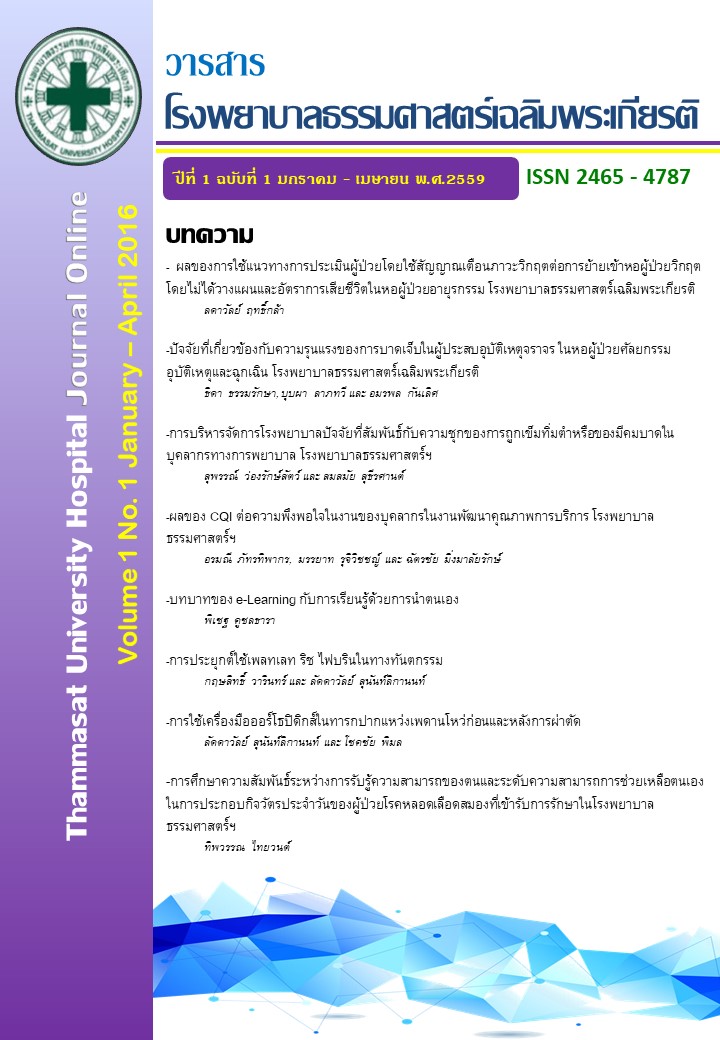The use of pre and post-surgical orthopedic appliances in cleft lip and palate infant
Keywords:
Cleft lip and palate, Nasoalveolar molding, Infant orthopedic appliancesAbstract
The use of orthopedic appliances in cleft lip and palate infant can be used before and after primary lip nose surgery. These appliances include an adhesive tape, nasoalveolar molding appliance (NAM), and nasoform which aims to reduce the severity of lip and nose deformity in cleft and palate infant. Different kinds of device serve different functions. For example, The NAM is used to arrange the alveolar ridge, reduce the collapse and distortion of the lip / nose and facilitate the swallowing mechanism. Each infant requires a unique appliance that is suitable for individual deformity at each specific time point. However, it is recommended to start using the appliance as early as possible in order to achieve the effectiveness of the treatment. This will accomplish more symmetric appearing of lip and nose from the primary surgery. Therefore the additional surgery that may affect growth and development is not necessary. This treatment also contributes to a psychological support to parents. In brief, these appliances are considered as high cost-effectiveness because they provide a satisfactory result by using an inexpensive material with uncomplicated technique. This article aims to introduce and promote the use of these appliances in cleft lip and palate infant, especially for the multidisciplinary treatment, as a role of the dentist. Therefore, this effective treatment can be more approachable for these infants.
References
ปองใจ วิรารัตน์, วิภาพรรณ ฤทธิ์ถกล, กมลรัตน์ลิมป์ปัทมปาณ (2553)การศึกษาการกระจายของภาวะปากแหว่งเพดานโหว่ในโรงพยาบาลมหาราชนครราชสีมาระหว่างปี พ.ศ.2548-2552 วิทยาสารสมาคมทันตแพทย์จัดฟันแห่งประเทศไทย, 9: 3-13.
พนารัตน์ ขอดแก้ว, กฤษณ์ ขวัญเงิน และ วิมล ศิริมหาราช (2554) ศูนย์แก้ไขความพิการบริเวณใบหน้าและศรีษะ คณะแพทยศาสตร์ และ คณะทันตแพทยศาสตร์มหาวิทยาลัยเชียงใหม่ 29/04/2558.https://cleft.med.cmu.ac.th/article/722_nasoform-aaaaa/
มารศรี ชัยวรวิทย์กุล, วไล เชตะวัน, สหธัช แก้วกำเนิด, วริศรา ศิริมหาราช, กฤษณ์
ขวัญเงิน (พศ. 2555) การดูแลรักษาผู้ป่วยปากแหว่งเพดานโหว่สำหรับทันตแพทย์และทันตแพทย์จัดฟันเล่ม1 เชียงใหม่: บริษัท ทรีโอ แอดเวอร์ไทซิ่งแอนด็มีเดีย จำกัด 97-241.
Abida I, Arsalah R, Junaid I. (2010) Nasoalveolar molding of bilateral
cleft of the lip and palate infants with orthopaedic ring plate. J Pak Med Assoc. 60(7): 527-31.
Grayson BH, Maull D. (2004) Nasoalveolar molding for infants born with clefts
of lip, alveolus and palate. Clin Plast Surg, 31: 149-58.
Grayson BH, Shetye PR, Cutting CB. (2005) Presurgical nasoalveolar molding
treatment in cleft lip and palate patients. Clin Journal, 1: 4-7.
Matsuo K, Hirose T. (1988) Nonsurgical correction of cleft lip nasal deformity in the early neonate. Ann Acad Med Singapore, 17: 358–65.
Matsuo K, Hirose T, Otagiri T, Norose N. (1989) Repair of cleft lip with nonsurgical
correction of nasal deformity in the early neonatal period. Plast Reconstr Surg. 83: 25–31.


